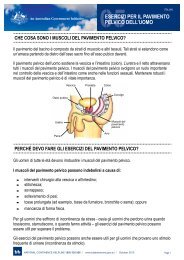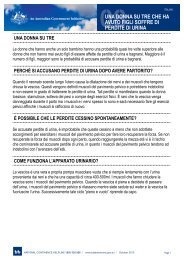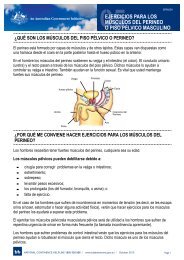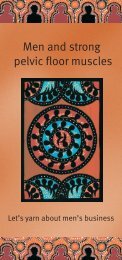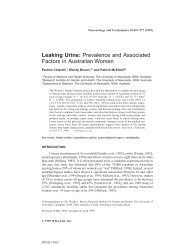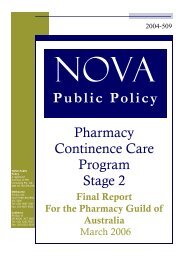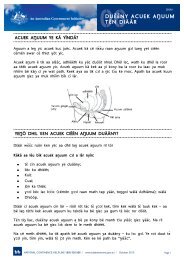Continence Tools for Residential Aged Care - Bladder and Bowel ...
Continence Tools for Residential Aged Care - Bladder and Bowel ...
Continence Tools for Residential Aged Care - Bladder and Bowel ...
Create successful ePaper yourself
Turn your PDF publications into a flip-book with our unique Google optimized e-Paper software.
10<br />
5. The Bristol Stool Form Scale<br />
What is the Bristol Stool Form Scale?<br />
The Bristol Stool Form Scale is a visual aid designed<br />
to help you to classify the consistency or <strong>for</strong>m of the<br />
stool. The seven types of stool are pictured on the left.<br />
The scale is widely used in practice <strong>and</strong> has a strong<br />
research base.<br />
Why should the Bristol Stool Form Scale<br />
be used?<br />
Stool consistency (i.e. stool <strong>for</strong>m) is an important factor<br />
to consider in assessing bowel function. By referring<br />
to the Bristol Stool Form Scale, you will obtain more<br />
accurate assessment in<strong>for</strong>mation than through other<br />
methods of evaluation.<br />
What is a normal stool?<br />
If the resident has types 1 <strong>and</strong> 2 stool, this indicates<br />
constipation. Types 3 & 4 are considered ‘normal stools’<br />
<strong>and</strong> types 5-7 denote looser stools or diarrhoea.<br />
The most ideal stool type is type 4 as this is the<br />
easiest to pass.



